Whether you call them snake plants, ‘mother-in-laws tongue’, Sansevieria, or their newer reclassification ‘Dracaena’, these sculptural houseplants are a staple in many homes. They rose to popularity in the 70’s but with so many cultivars available today, it’s easy to see why snake plants are a great choice for a low-maintenance addition of greenery to your space. Their upright, slender growth habit also means they don’t take up much room — so they are well-suited to humble abodes that are smaller in scale.
In this post, I will share how I care for my snake plants + will be covering the topics of:
- light
- watering + humidity
- fertilising
- pests
- temperature
- potting mix
- repotting (+pots)
- flowering
- + propagation
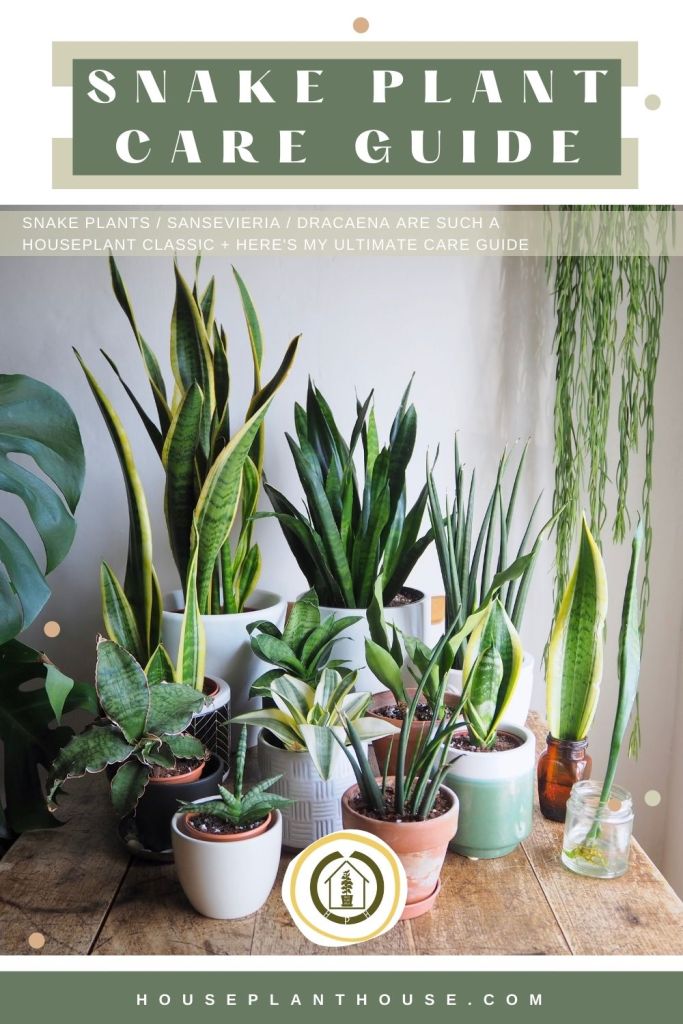
Light
Unlike some of the more fussy foliage specimens, snake plants are adaptable to a range of lighting conditions. They are often sold as a ‘low-light’ houseplant option, but I feel this categorisation needs some further clarification. Whilst it is true that sansevieria can tolerate lower light better than other houseplants, the crucial part of that sentence is tolerate — they can ‘put up with’ lower light, but this will mean growth will be very slow + your plant won’t really thrive in a dark corner. If you have the conditions, fairly bright, indirect light is a better option + you’ll notice more growth + a robust plant that makes a statement, rather than a few spindly stems in a shady spot. Bear in mind that these are the conditions that are personal to my current environment + are used as a guide for you to compare with your own home. It’s important to also remember that windows can be pretty different in size + if you live in a built up area, with other buildings close by, or if there are obstacles like trees outside, this all has an impact on the intensity of light. If they are acclimatised gradually, these plants can also handle some direct light, but if space is at a premium keep these positions for your string of pearls + cacti collection!


Watering + Humidity


Sansevieria are pretty resilient plants that often have to put up with overwatering, followed by compensatory measures that quite often result in under watering! The main things to watch out for are the negative effects of an excess of water which will cause the roots to rot + stems to go soggy. To avoid this potential problem, the potting mix (+ planter) can really help you keep your plant healthy — more on this later in the post. Bear in mind that if your snake plants are in a lower-light position, their watering needs will be reduced + if you have some plants growing in a brighter spot, make sure you aren’t under watering (I admit I am guilty of this).
During the growing season, I water my snake plants thoroughly, then leave the potting mix to almost dry out before watering again. In my conditions, this is something like once every two-three weeks, but will fluctuate depending on the position of each plant. Over winter, watering can be reduced quite significantly + in combination with the drop in temperature too, I find I water my snake plants around every 5-6 weeks. If you aren’t sure, you can stick your finger in the potting mix, or get used to how the weight of the pot feels when it’s just been watered + also what it feels like when it needs a drink. I like to use a hygrometer to check the moisture of my pots to ensure I’m not overwatering, here’s the one I use. During the colder months, I generally like to water my Sansevieria from below on a tray — I put the pots on a large flat plate or drip tray + water the plate, before leaving them for around 30 minutes to an hour to allow the plants to soak up what they need.
Snake plants cope really well in regular household environments + they don’t have any special humidity needs. I shower the stems every few weeks to keep them clean, but other than that, a typical room will suit them fine — they are nice + easy going!
Fertilising
These are not heavy feeders but regular fertilising during Spring + Summer can really help to keep your snake plants fighting fit. A succulent or houseplant fertiliser at half the recommended dilution is adequate to give your Sansevieria the nutrients they need to stay strong + looking their best too. If your climate is quite different to mine + you find your plants grow year-round, then more regular fertilising is fine. It’s very cold where I live during Winter + with the harsh decrease in temperatures, I’m getting used to my houseplants stopping growing altogether. The easiest way to judge whether or not to feed is if your plant is actively growing. Plants that are healthy are less likely to become a target for pests, so I think feeding is definitely a good habit to get into.
Pests
Pests can sometimes be hard to spot on your snake plants because the stems have a tendency to grow closely together + the more compact plants like golden hahnii + the star like growth of kirkii varieties make it difficult to see in all the crevices! The most common pest issues you might encounter with snake plants are mealy bugs. A Q-tip soaked in rubbing alcohol will treat a minor attack of a few lone bugs, but something larger in scale will require more extreme measures such as a neem oil/insecticidal mix, a soil change, or pruning. After any treatment, I like to use SB plant invigorator either as a ready to use spray, or you can also get a concentrated bottle to dilute into a spray bottle yourself. Look out for white cotton-wool like clusters or small white bugs on the stems, particularly at the base of the plant. Spider mites are another potential problem if your plant has suffered prolonged under watering, coupled with very warm, dry conditions and low humidity. Correct care + keeping your plants clean + free from dust is the best pest prevention so getting to know what your plants need will save you a headache in the long run.
Temperature
Sansevieria grow well in temperatures between 15°C (59°F) + 30°C (86°F) + can cope in winter with conditions no lower than 10°C (50°F)… they are not tolerant to frost so if you tend to keep your plants outside over Summer, make sure to bring them in before a cold snap (+ side note: check very carefully for bugs/do a soil change before bringing back indoors with your other plants/isolate ). If it’s one thing that snake plants hate, it’s a cold draught so be mindful of open windows etc. during the colder months. Keep away from any heat source such as radiators or heaters so be prepared to move your plants around when there is a seasonal shift in temperatures + you put the heating on!
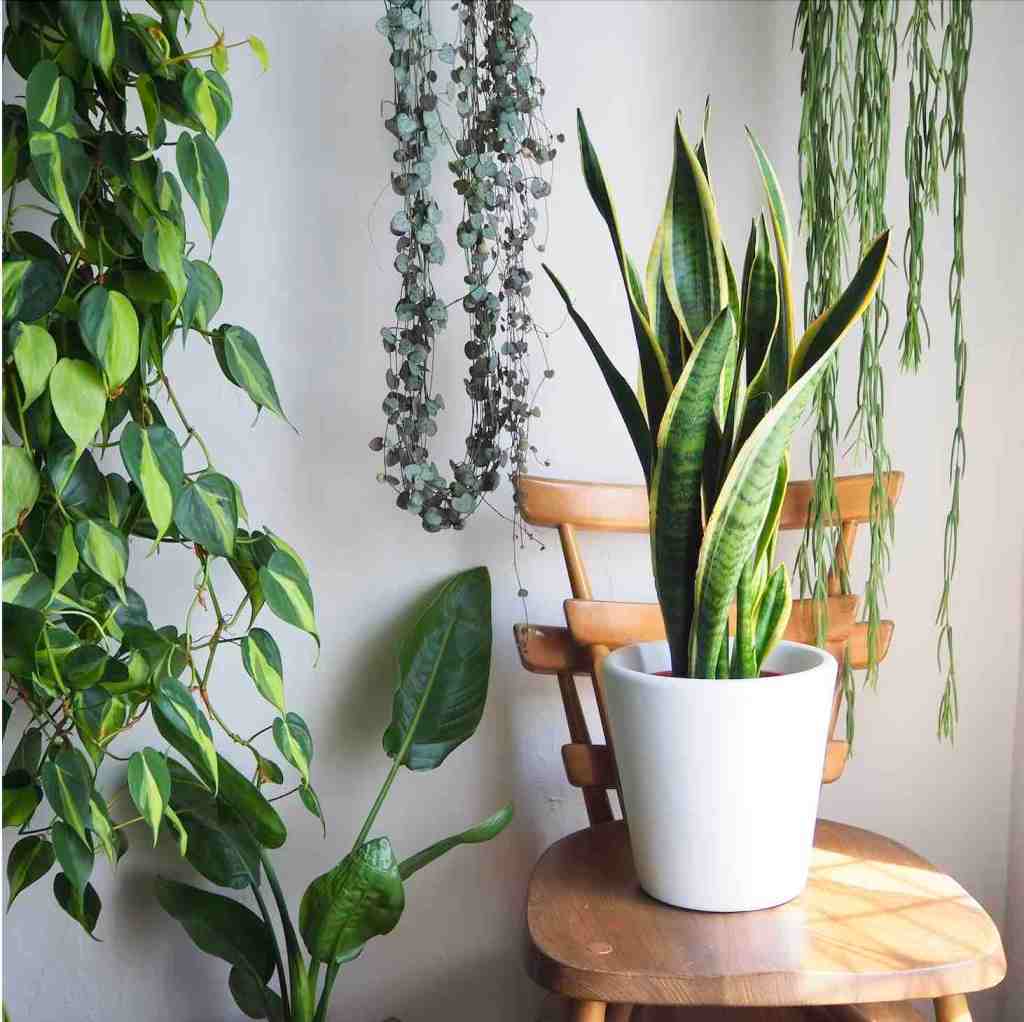
Potting Mix
Dense, heavy compost with no amendments is a sure fire way to upset your snake plant, so before repotting, make sure you have the right ‘ingredients’ to hand. These plants thrive in a well draining, light + airy mix which will let the water flow through it much more easily + also dry out faster. I use a specialised succulent + cacti compost if I have some (or a peat-free houseplant compost) as the base, before mixing in bark, perlite, pumice/grit as soil amendments to create something that will work well for this type of plant. You want to ensure that the water can drain though the pot easily + is not swimming around the top.


Repotting (+ pots)
Another reason Sansevieria make excellent houseplants is that they really don’t like being repotted often — every 2-3 years is totally fine + they actually dislike being potted too frequently. I only ever re-pot mine when there are roots growing out of the bottom or until they have contorted the pot with their thick rhizomatic root system (they are similar to ZZ plants in this way).A few days before you re-pot, it’s a good idea to water your plant to reduce the risk of transplant shock + only go up one pot size at a time too.
It might sound obvious but I get quite a lot of questions about the relationship between pots + potting mixes! Basically, the type of pot you choose to use is also intrinsically connected to your mix + watering requirements. If you are used to using nursery pots + choose to pop your snake plant in terracotta, it can be hard to adapt to the different watering needs. It’s quite common to find that you might be under watering because terracotta is much more porous + will wick the moisture away from the plant. This can have benefits of course, especially in preventing root rot, but be mindful of the combination of a very free-draining potting mix PLUS terracotta as you might need to increase watering quite considerably. It’s all about balance + knowing what works for you. I know quite a few over-waterers use terracotta to compensate for a heavy-hand with the watering can!
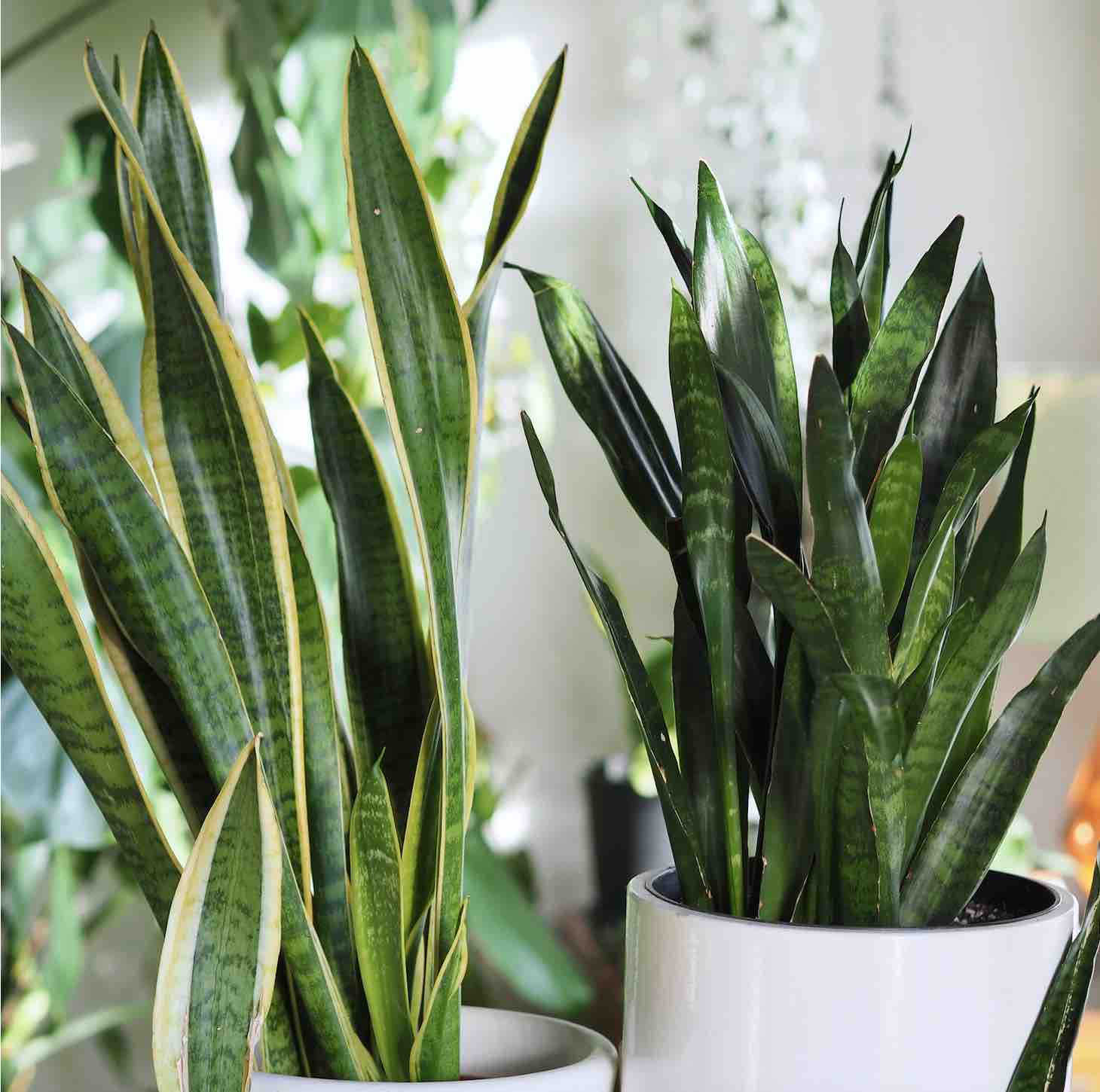
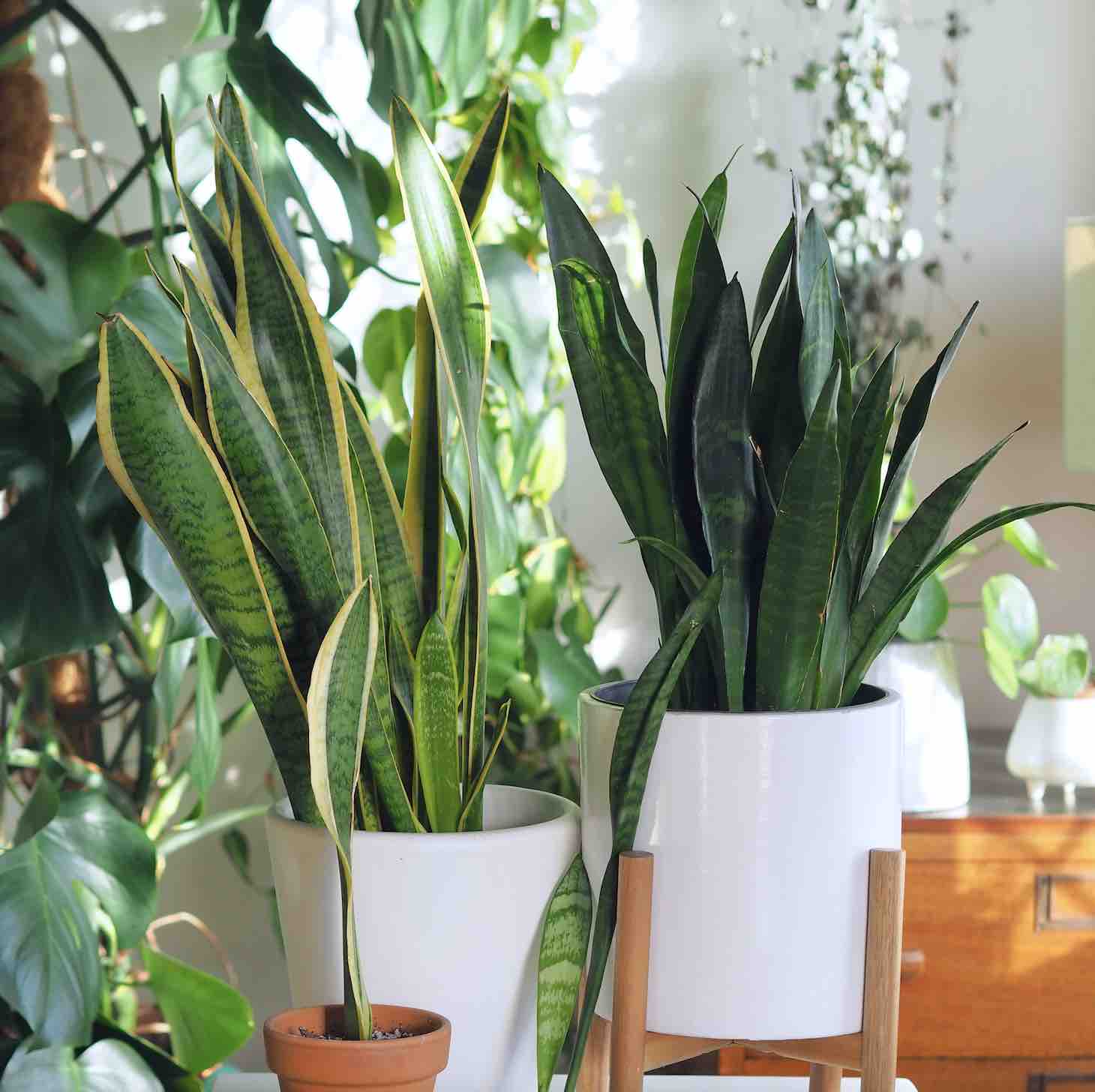
Flowering
A quick note on flowering here because snake plants don’t generally bloom that frequently, especially when kept as houseplants! The fragrant flowers appear on tall spikes as green/white clusters + the main cause is often that the plant is very pot-bound — all the more reason to not re-pot your plant too readily!
Propagation
Snake plants are fun to propagate + there are two choices here. Propagation by division is a good option if you have a large plant that is bursting out of the pot as more mature specimens do! By removing the plant from the pot, you can loosen the rhizomatic roots before separating part of the plant, which you can gently work apart from the main ‘clump’ of stems. This new division will already have an established root system + so can be potted up in a new pot + voila! a new plant is yours with little effort. This is a good option if like me, you love pots + spend time getting the combination of planter/cache pot + plant just how you like it — you can keep your main plant in the original pot, just give it some fresh soil when you re-pot!
The other propagation option is stem cuttings, which do take a lot longer but if you enjoy a propagation experiment, it’s worth it. The process of watching a new stem start to grow from the base of another is fascinating + I always seem to have a few stems rooting here at varying stages! Stem cuttings are also a great way of saving a plant that has been overwatered because (providing the rot hasn’t affected the end of the stems) you can chop + prop those stems before discarding the base of the plant that has rotted. It’s always advisable to propagate healthy cuttings so if your plant has a disease, virus or soggy stems, you should get rid of these (don’t compost them — you should bin them).



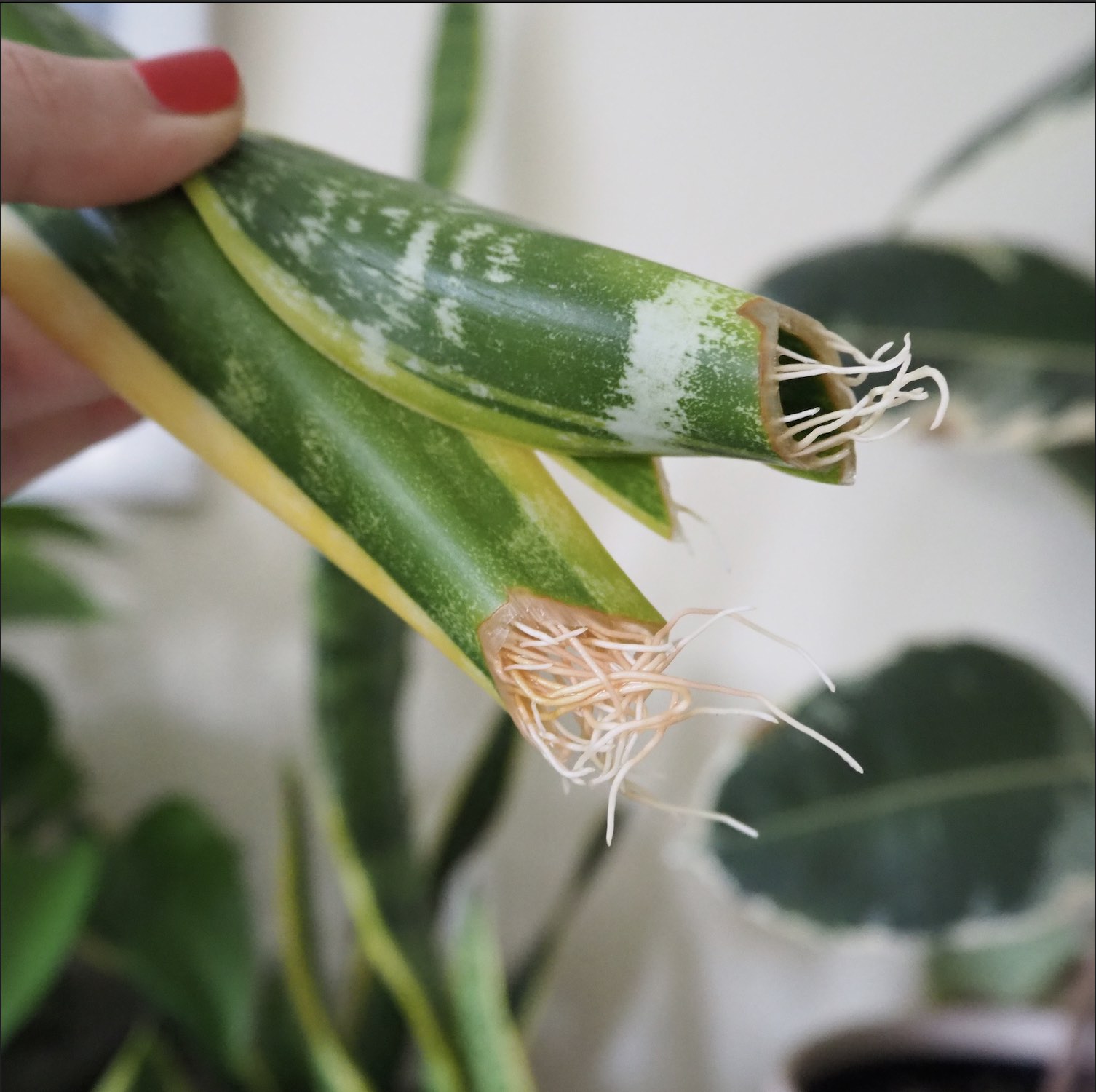
I’ve got a blogpost here if you want to read more about snake plant propagations. Here’s an excerpt:
The most important thing with succulent stems such as these is that you should leave the cut end callus over (seal over) adequately before putting in water. This is a game changer in getting your cuttings to root without rotting — I generally wait around 5-7 days but sometimes longer in winter.
from: Propagate with me: how to root snake plants, zz plants + tips for successful propagations
Here’s a pin from my propagation post if you want to save it for future reference:
There we go, a snake plant care guide for you! Thanks for those that asked for this post + I hope you find it helpful.
*Affiliate links are used in the post which means I can receive a (very) small amount of commission if you make a purchase — thank you for supporting my blog. I often get asked where I get specific items from so have linked these here. I have bought all these products with my own money.

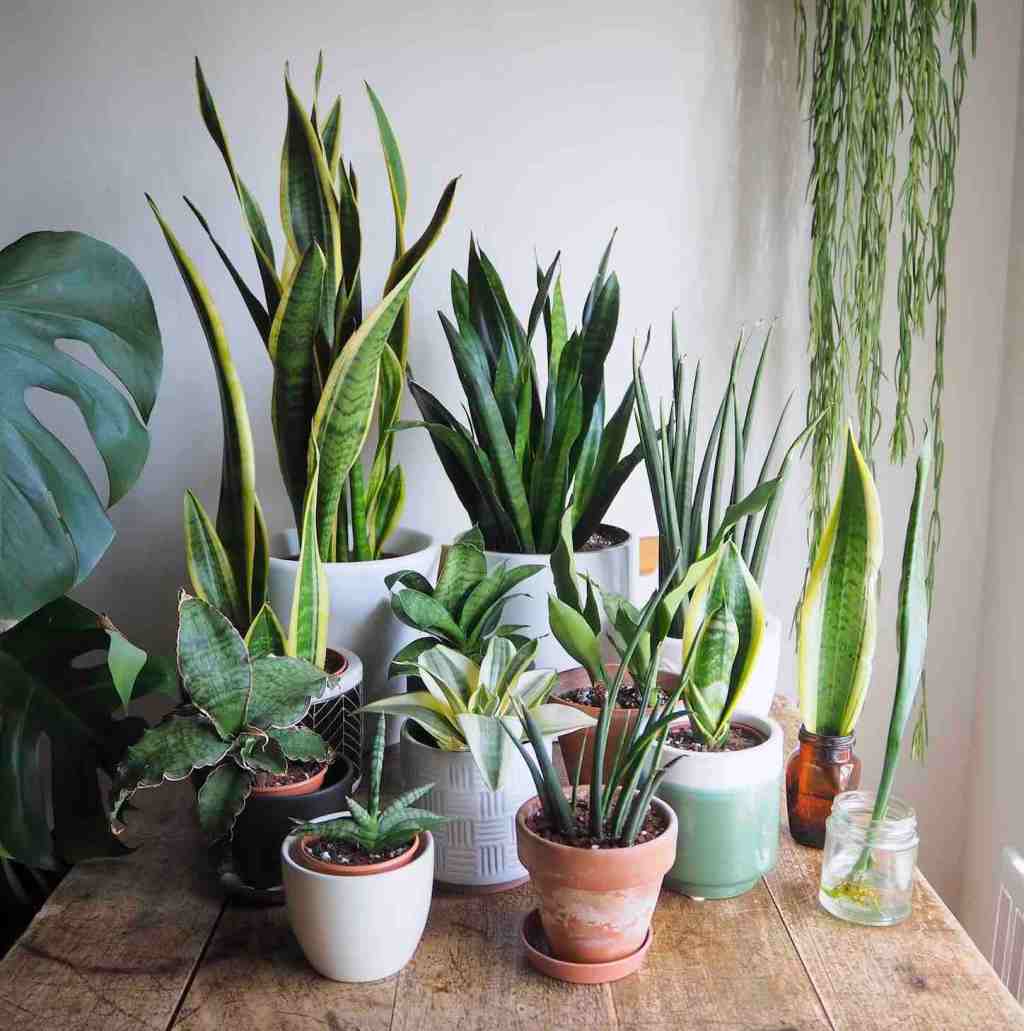
Leave a Reply